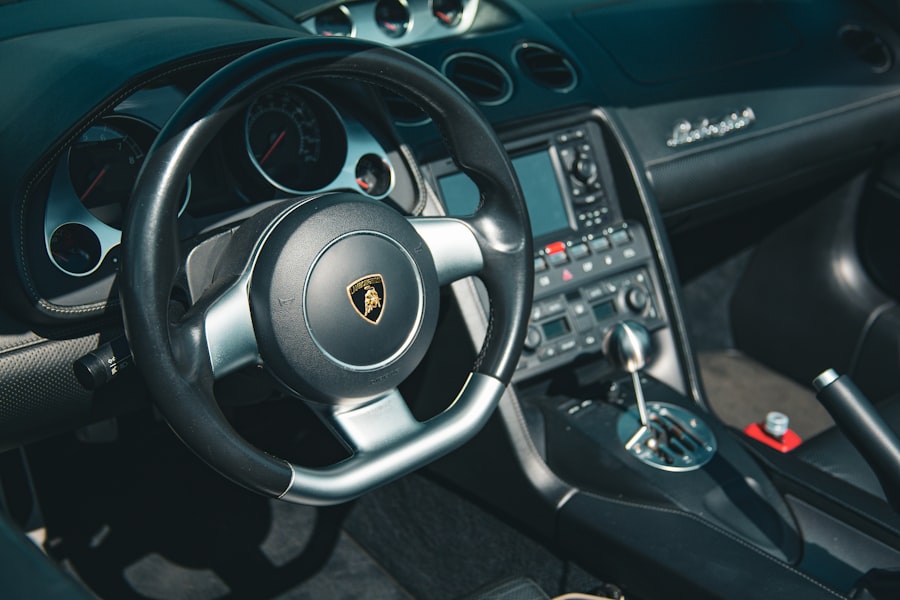Luxury items have always held a certain allure for me, drawing me in with their promise of elegance, status, and exclusivity. The glimmer of a designer handbag or the intricate craftsmanship of a high-end watch can evoke feelings of desire that are hard to resist. I found myself captivated by the idea that owning such items could elevate my lifestyle and enhance my self-image.
However, as I delved deeper into this world, I began to realize that the financial burden associated with these luxuries could be overwhelming. The initial thrill of acquisition often gave way to anxiety over the costs, maintenance, and the pressure to keep up with trends. As I accumulated more luxury items, I started to feel the weight of my choices.
Each purchase was a decision that impacted my finances, often leading to a cycle of spending that was difficult to break. The allure of luxury was not just about the items themselves; it was also about the lifestyle they represented. Yet, I soon found myself grappling with the reality that these possessions could become a source of stress rather than joy.
The financial burden of maintaining a collection of high-end items began to overshadow the initial excitement, prompting me to reevaluate my relationship with luxury.
Key Takeaways
- The allure of luxury items can create a financial burden
- Accumulating a collection of high-end items can be a journey
- Understanding the value of luxury items and their potential for cash
- Dealing with the emotional attachment and deciding to sell luxury items
- Learning about the resale market and finding the best ways to sell luxury items
My journey into the world of luxury: How I accumulated a collection of high-end items
My journey into the world of luxury began innocently enough, sparked by a fascination with fashion and design. I remember the first time I splurged on a designer handbag; it felt like a rite of passage into a realm I had long admired from afar. With each subsequent purchase, I felt a rush of excitement and validation, as if I were affirming my place in a world that celebrated opulence.
I sought out limited editions and exclusive releases, often spending hours researching trends and styles to ensure my collection was both impressive and enviable. As time went on, my collection grew exponentially. I found myself attending fashion shows, networking with fellow enthusiasts, and even joining online communities dedicated to luxury goods.
Each item I acquired seemed to tell a story, representing not just a financial investment but also a piece of my identity. However, this journey was not without its pitfalls. The thrill of acquisition often led me to make impulsive decisions, purchasing items that I later realized did not align with my personal style or values.
The accumulation of luxury goods became a double-edged sword; while they brought me joy, they also created an ever-growing sense of obligation.
The realization: Understanding the value of my luxury items and the potential for turning them into cash

It wasn’t until I faced some unexpected financial challenges that I began to reassess the value of my luxury items. As bills piled up and savings dwindled, I found myself contemplating the possibility of selling some pieces from my collection. This realization was both liberating and daunting; I had invested so much time and money into curating these items that parting with them felt like a betrayal.
However, I soon discovered that many of my luxury possessions held significant resale value, which opened up new avenues for financial relief. Understanding the potential for turning my luxury items into cash was a turning point in my journey. I began researching resale markets and platforms where I could sell my items without losing too much value.
The idea that my collection could serve as a financial safety net was empowering. It shifted my perspective from viewing these items solely as possessions to recognizing them as assets that could help me navigate my financial landscape. This newfound understanding prompted me to take action and explore the possibilities that lay ahead.
The emotional attachment: Dealing with the sentimental value of luxury items and the decision to sell them
| Item | Sentimental Value | Decision to Sell |
|---|---|---|
| Watch | High | No |
| Jewelry | Medium | Yes |
| Handbag | Low | Undecided |
As I prepared to sell some of my luxury items, I encountered an emotional hurdle that proved to be more challenging than I anticipated. Each piece in my collection carried memories and stories that were deeply intertwined with my personal experiences. A particular handbag reminded me of a milestone birthday celebration, while a pair of designer shoes was linked to a significant career achievement.
The sentimental value attached to these items made it difficult for me to consider parting with them. I found myself grappling with conflicting emotions—on one hand, there was the practical need to alleviate financial stress, while on the other hand, there was an emotional attachment that made letting go feel like losing a part of myself. To navigate this internal struggle, I took time to reflect on what each item truly represented in my life.
Ultimately, I realized that while these luxury goods held memories, they did not define who I was or dictate my worth. This realization helped me come to terms with the decision to sell some pieces, allowing me to embrace change while still cherishing the memories associated with them.
Research and preparation: Learning about the resale market and finding the best ways to sell luxury items
With a clearer mindset about selling my luxury items, I dove headfirst into researching the resale market. I quickly discovered that there were numerous platforms available for selling high-end goods, each with its own set of advantages and challenges. From consignment shops to online marketplaces, I had to weigh factors such as fees, audience reach, and ease of use before deciding where to list my items.
I also took the time to educate myself about pricing strategies for luxury goods.
I learned about recent sales trends and sought out comparable listings to gauge appropriate pricing for my items.
This preparation not only equipped me with valuable knowledge but also instilled confidence in my ability to navigate the selling process effectively.
The selling process: My experience with selling luxury items and the challenges I faced

The actual selling process proved to be both exhilarating and nerve-wracking. After carefully selecting which items to part with, I meticulously photographed each piece, ensuring that their beauty and quality were showcased in the best light possible. Writing detailed descriptions became an art form in itself; I wanted potential buyers to appreciate not just the item but also its story and significance.
However, challenges arose along the way. Some items garnered little interest despite their high value, while others attracted attention but received lowball offers that felt disheartening. Navigating negotiations required patience and resilience; it was easy to feel discouraged when faced with setbacks or unresponsive buyers.
Yet, each interaction taught me something new about the market and reinforced my determination to see this process through.
The financial benefits: How selling luxury items helped me alleviate financial stress and achieve my goals
As I successfully sold several pieces from my collection, I began to experience tangible financial relief. The funds generated from these sales provided me with much-needed breathing room in my budget, allowing me to address pressing expenses without resorting to credit or loans. This newfound financial flexibility opened doors for me; it enabled me to invest in experiences rather than material possessions—something I had long overlooked in pursuit of luxury.
Moreover, selling my luxury items helped me achieve specific financial goals that had previously felt out of reach.
The sense of accomplishment that came from transforming once-idle possessions into cash was empowering; it reinforced the idea that I could take control of my financial situation rather than being beholden to it.
Letting go: Coping with the emotional impact of selling my luxury items and finding closure
Letting go of my luxury items was not merely a financial transaction; it was an emotional journey that required introspection and acceptance. As each piece left my possession, I felt a mix of relief and nostalgia wash over me. While parting with these items allowed me to alleviate financial stress, it also meant relinquishing tangible reminders of moments that had shaped my life.
To cope with this emotional impact, I focused on creating new memories that would replace those tied to material possessions. Instead of dwelling on what I had lost, I redirected my energy toward experiences that brought joy—whether it was spending time with loved ones or exploring new hobbies. This shift in focus helped me find closure; it allowed me to appreciate what those luxury items represented without feeling defined by their absence.
Lessons learned: Reflecting on my experience and the valuable insights gained from turning luxury into cash
Reflecting on my experience has provided me with invaluable insights about consumerism, value, and personal growth. One key lesson I’ve learned is that material possessions do not equate to happiness or fulfillment; rather, true contentment comes from within and is often found in experiences rather than things. My journey through buying and selling luxury items has taught me the importance of mindful consumption—making intentional choices about what I bring into my life based on genuine need rather than fleeting desire.
Additionally, I’ve come to appreciate the concept of value beyond monetary terms. While selling my luxury items provided financial relief, it also highlighted how our relationships with possessions can evolve over time. Understanding when it’s time to let go can lead to personal growth and freedom from material constraints.
Advice for others: Tips and strategies for anyone looking to sell their luxury items for financial gain
For anyone considering selling their luxury items for financial gain, there are several strategies I’d recommend based on my own experience. First and foremost, take your time researching the resale market; understanding where your items will be most valued can make all the difference in achieving fair prices. Next, be honest about your motivations for selling—whether it’s financial necessity or simply decluttering your space—and approach the process with an open mind.
Emotional attachments can complicate decisions; acknowledging these feelings can help you navigate them more effectively. Finally, don’t underestimate the power of presentation when listing your items for sale. High-quality photographs and detailed descriptions can significantly enhance buyer interest and trustworthiness.
Remember that selling luxury goods is not just about transactions; it’s about sharing stories and connecting with potential buyers who appreciate what you have to offer.
Embracing a new mindset towards luxury and finding freedom in letting go of material possessions
In conclusion, my journey through the world of luxury has transformed not only my relationship with material possessions but also my understanding of value itself. Embracing a new mindset towards luxury has allowed me to find freedom in letting go—recognizing that true wealth lies not in what we own but in how we choose to live our lives. As I move forward, I’m committed to making more intentional choices about consumption while prioritizing experiences over possessions.
Selling my luxury items has been an empowering process that has alleviated financial stress and fostered personal growth. Ultimately, I’ve learned that letting go can lead to new beginnings—both financially and emotionally—and I’m excited about what lies ahead as I continue this journey toward a more mindful existence.
In the world of luxury automobiles, selling a high-end car for cash can be a complex process, often requiring a keen understanding of market dynamics and buyer expectations. A related article that delves into the nuances of this process can be found on Ami Wrong Here’s website. This article provides insights into the strategies and considerations necessary for successfully navigating the luxury car market. For more detailed information, you can read the full article by visiting this link.
THIS IS CRAZY! Wife Demanded Cash From Me For Her Ex; So I Sold Her Car For Cash
FAQs
What are the benefits of selling a luxury car for cash?
Selling a luxury car for cash can provide immediate funds, eliminate the hassle of dealing with potential buyers, and avoid the depreciation of the car’s value over time.
How can I find a reputable buyer for my luxury car?
You can find a reputable buyer for your luxury car by researching online platforms, seeking recommendations from friends or family, or contacting professional car buying services.
What factors should I consider when selling my luxury car for cash?
When selling a luxury car for cash, it’s important to consider the current market value of the car, its condition, any outstanding loans or leases, and the reputation of the buyer.
What documents do I need to sell my luxury car for cash?
You will typically need the car’s title, maintenance records, and any relevant paperwork related to loans or leases. It’s also important to have a bill of sale and a release of liability form.
Are there any risks involved in selling a luxury car for cash?
There are potential risks involved in selling a luxury car for cash, such as dealing with fraudulent buyers, receiving counterfeit money, or encountering legal issues if the transaction is not properly documented. It’s important to take precautions and work with reputable buyers.




